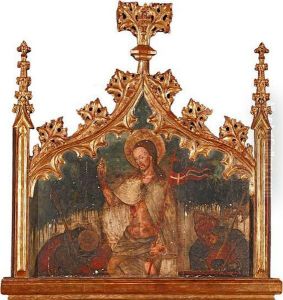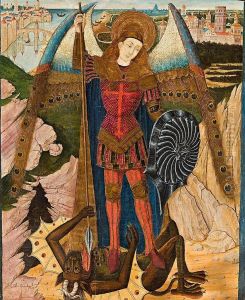Pere Garcia De Benavarri Paintings
Pere Garcia de Benavarri is a somewhat obscure figure in the annals of art history, primarily due to the scant information available about his life, including his birth and death dates. He was active during the 15th century, a period marked by significant developments in European art, including the early stages of the Renaissance in Italy and the flourishing of the International Gothic style. Despite the lack of extensive records about Benavarri's life, he is known to have been a painter in the Crown of Aragon, a composite monarchy that included parts of modern Spain, France, and Italy.
Benavarri's work is often associated with the late Gothic style, characterized by its intricate detail, vibrant colors, and religious themes. This style was prevalent in the regions of Catalonia and Aragon, where he was most active. Although specific works attributed to him are scarce, those that are, demonstrate a high level of skill and an understanding of the symbolic language of medieval art. His paintings would have likely included altarpieces, devotional panels, and possibly illuminated manuscripts, which were common artistic outputs of the time.
The lack of records makes it challenging to trace Benavarri's training or influences. However, it is plausible that he was part of a workshop or guild, as was customary for artists of his time. These institutions played a crucial role in the transmission of artistic techniques and styles across Europe. They also provided a structured environment for training new artists, suggesting that Benavarri would have been well-versed in the technical and theoretical aspects of his craft.
Despite the difficulties in piecing together a comprehensive biography of Pere Garcia de Benavarri, his existence underscores the rich tapestry of medieval and early Renaissance art in the Iberian Peninsula. His contributions, though not as widely recognized as those of his contemporaries, add depth to our understanding of the period's artistic landscape. Further research and advancements in historical and art historical methodologies may yet shed more light on his life and work, offering a fuller picture of his contributions to the art history of the Crown of Aragon.

